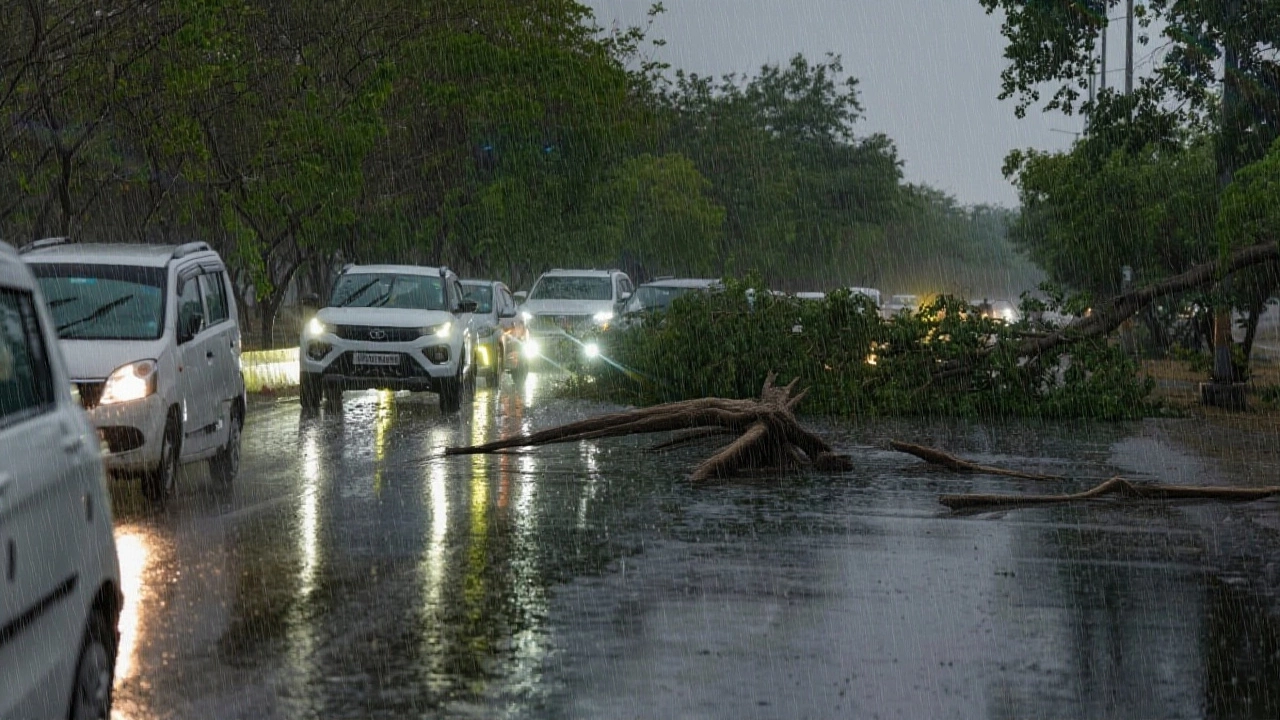Thunderstorms Explained: What They Are and How to Stay Safe
Ever heard the rumble and wondered what’s really going on up there? A thunderstorm is more than just a noisy sky—it's a powerful mix of heat, moisture, and wind that can turn a sunny day into a sudden show of lightning and rain. Knowing the basics helps you stay calm when the clouds roll in, and a few simple habits can keep you and your loved ones out of harm’s way.
How Thunderstorms Form
It all starts with warm air rising from the ground. When that air hits cooler layers higher up, it cools down and the water vapor inside turns into tiny droplets. Those droplets bump into each other, grow bigger, and eventually become raindrops or hail. As the droplet cloud spins, ice particles inside create a charge separation: the top gets positive, the bottom gets negative. When the difference gets big enough, nature releases a spark—lightning. The flash heats the air so fast it expands, producing the sharp crack we hear as thunder.
The whole process can happen in just a few minutes, which is why storms can appear and disappear quickly. You’ll often see a dark base (the “cloud to ground” part) and a lighter, billowy top called a “anvil” that spreads out with the wind.
Practical Safety Tips
Lightning is the biggest danger during a storm, but a few quick steps cut the risk dramatically:
- Seek shelter immediately. A sturdy building or a fully enclosed metal vehicle is the safest place. Stay away from windows, doors, and outdoor structures.
- Don’t touch metal objects. Metal conducts electricity, so avoid leaning on railings, fences, or outdoor equipment.
- Unplug electronics. A sudden surge can fry devices and cause fires. If you can’t unplug, at least turn them off.
- Avoid water. Showers, bathtubs, and even standing water can carry a lightning strike. Wait until the storm passes before using them.
- Stay put for 30 minutes. Lightning can strike the same area more than once. Count the time after the last clap before heading back outside.
If you’re caught outside with no shelter:
- Crouch down, keep your feet together, and place your hands on your knees. This lowers your profile and reduces the chance of a strike.
- Avoid isolated tall objects like trees, poles, or the top of a hill.
- If you’re in a car, keep the windows up. The metal frame acts like a Faraday cage and redirects the charge around you.
Most people think thunderstorms are a sign of bad luck or spooky vibes. That’s a myth worth busting—thunderstorms are natural weather events, and feeling uneasy is just a reaction to the loud sounds and bright flashes. Understanding the science turns fear into respect, and respect leads to safe choices.
Another common myth is that lightning only strikes the tallest thing. While height matters, lightning also seeks the best path to the ground, so it can hit shorter objects, especially if they’re wet or conductive. That’s why metal gutters, antennas, and even a pool ladder can become targets.
Finally, you might hear that “if you’re inside, you’re fine.” It’s mostly true, but places with large open windows or skylights can let a strike in. Keep a safe distance from those openings during an active storm.
Bottom line: thunderstorms are powerful but predictable. By watching the sky, listening for the first crack of thunder, and following the simple safety steps above, you can enjoy the dramatic show without putting yourself at risk. Stay informed, stay indoor, and let nature do its thing while you stay safe.
Delhi’s Dust Storm Relieves Heat, IMD Warns of Thunderstorms Through May 25
- World
- 0

